|
Printables |
PowerPoints |
Online exercises |
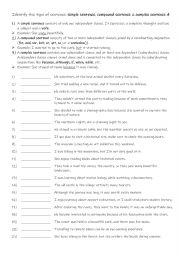
|
A2 Identify the type of sentence simple sentence, compound sentence & complex sentence 4
Students should learn to identify simple, compound, and complex sentences because it helps them write with more variety, organise ideas clearly, understand reading texts more easily, prepare for future learning, and communicate their thoughts more accurately. Each type is used 7 times. Answers on page 2.
Level: elementary
Age: 9-100
Type:
Downloads: 169
|
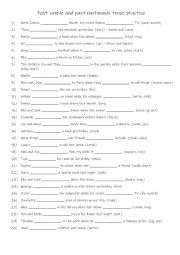
|
A2 Past simple and past continuous tense practise
Students read the sentences looking for markers to indicate which tense should be used, they then complete the gap-fill using either the past simple or past continuous tense and the past of infinitive in bold. You could make it more challenging by removing the infinitive in () and let them complete it with another suitable verb. Answers on page 2.
Level: elementary
Age: 8-100
Type:
Downloads: 128
|
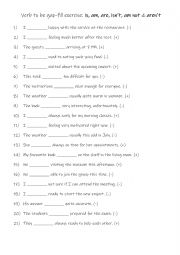
|
A2 Verb to be gap-fill exercise is, am, are, isnÔŅĹt, am not & arenÔŅĹt 1
Students read the sentences to see which form of the verb to be is needed to complete the sentences. (+) needs a positive form and (-) needs a negative form of verb to be. Answers on page 2
Level: elementary
Age: 7-100
Type:
Downloads: 103
|

|
A2+ - B1+ Adjective gap-fill exercise for comical animal behaviour
Students familiarise themselves with the 27 adjectives. Then they read the sentences to see which adjective is needed to complete the gap-fill. Answers on page 2.
Level: intermediate
Age: 9-100
Type:
Downloads: 116
|
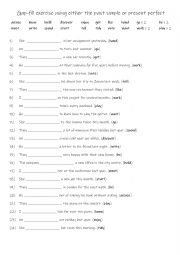
|
A2+ -B1 Gap-fill exercise using either the past simple or present perfect - Copy
Students read the sentences and complete the gap-fill with the correct form using the word in bold. For more able students you could remove the word in bold at the end of each sentence to make it more challenging.Answers on page 2.
Level: elementary
Age: 8-100
Type:
Downloads: 128
|
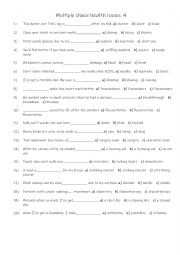
|
A2+ Multiple choice health issues 4
Students read the sentences and choose the correct word out of the given choices. Answers on page 2.
Level: elementary
Age: 11-100
Type:
Downloads: 114
|
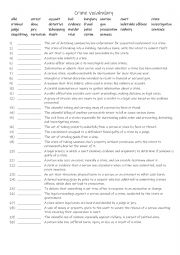
|
A2+- B1 Crime vocabulary - 30 words
Students familiarise themselves with the 30 crime related words and their meanings.Then they read the definitions and write the word being described in the space provided. Answers on page 2.
Level: intermediate
Age: 9-100
Type:
Downloads: 119
|
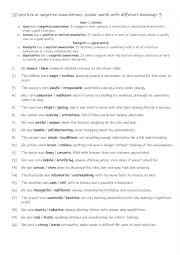
|
A2+-B1 20 positive or negative connotations similar words with different meanings 3
First, students need to familiarise themselves with the sentences with 20 connotations and check their meaning of each word. Then they read the sentences to see which one is best to complete the sentence. Answers on page 2.
Level: elementary
Age: 9-100
Type:
Downloads: 107
|
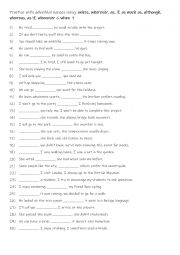
|
A2+-B1 10 adverbial clauses 1
Learning adverbial clauses using words like unless, wherever, as, if, as much as, although, whereas, as if, whenever and when helps students express complex relationships between ideas, such as condition, time, contrast, and manner. These clauses enrich their communication by allowing them to create detailed and nuanced sentences. Mastering these s...
Level: intermediate
Age: 9-100
Type:
Downloads: 123
|

|
A2+-B1 11 Time connectors:finally,while,as,when,but,until,after,before,later,then & at first
Students read the sentences and complete the gap-fill with a suitable time connector. Each conjunction is used 3 times. Answers on page 2.
Level: intermediate
Age: 8-100
Type:
Downloads: 114
|
|
|
|
|












